Hello all,
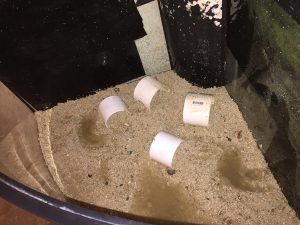
Couplings down before the plastic grating.
Detritus: In biology, detritus is dead particulate organic material. It typically includes the bodies or fragments of dead organisms as well as fecal material. Detritus is typically colonized by communities of microorganisms which act to decompose the material.
That definition above was something I pulled from Wikipedia. Detritus accumulation is something we definitely want to avoid in a reef aquarium, really any aquarium for that matter. Reef tanks with a lot of tightly packed live rock and poor circulation can become very problematic over time because of this. This is one of the reasons why successful reef aquarists will often advise people to (1) not use too much live rock. (2) be sure to have great circulation in your reef. (3) place your live rock structure in a manner that will allow at least some water flow which can move through the structure.
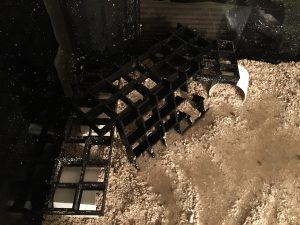
Couplings down with black plastic grating in place in a 92 gallon aquarium.
You want to make it difficult for detritus to accumulate. I achieve this by lifting most of the live rock up off the substrate using large PVC couplings and plastic grating. Not only does this make it harder for detritus to accumulate deep in your rock structure, but this also creates a place where shy fish can retreat to in order to feel safe in times of stress. If you get creative enough, you could even create a vertical shaft with plastic grating and place a circulation pump down in the structure in order to push water around.
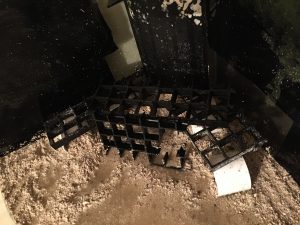
Same tank, different angle.
So mitigating detritus build-up and creating a chill sanctuary for nervous fish, all with the same method? But wait, that’s not all! if you call now…just kidding. Seriously though, it will even save you money by making your rock structure appear fuller without having to buy so much rock. If you are doing a minimalist aquascape, this won’t work because you don’t want to be able to see this underlying structure. To state the obvious, a minimalist aquascape would also go a long way to mitigating detritus build-up just by virtue of using less rock in the structure.
The particular plastic grating I used in the pictures was chosen for strength and economy. You could use some other material like fiberglass grate but it would certainly cost more. If you are doing this on a very large system, fiberglass grating wouldn’t be a bad idea though. The black, plastic, grating I show in the pictures is something I got years ago from US Plastics. The problem is, I don’t believe it is available anymore. Doing a little research online, I found THIS plastic grating which looks feasible but I caution the reader that I have no experience using it.
I use large diameter PVC couplings to support the grating. You want to find the DWV fittings which are usually located on the same aisle as the regular PVC. DWV stands for “drainage, waste, ventilation” and comes in bigger sizes than PVC.
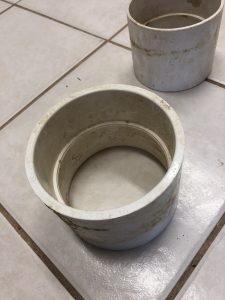
6″ DWV PVC couplings. This is how I used to orient them in an aquarium.
I typically use 6 inch DWV fittings. In the past, I would set the coupling down flat but I eventually noticed, when I broke a tank down, that the couplings themselves acted as a detritus trap oriented this way. This would also cause the isolated substrate to have dead zones which often created hydrogen sulfide. I would see this upon breakdown by the black stained substrate and smell of rotten eggs. Couplings oriented this way would even trap crabs and other creatures without an ability to crawl up a smooth, vertical surface. In order to rectify this I started situating the couplings on their side which has worked far better. As far as securing the grating to the couplings, I’ve simply just placed the grating on the couplings without using zip ties, letting the rock hold it all in place, but the use of zip ties isn’t a bad idea. You could drill a couple small holes in a coupling in order to pass through a zip tie and securely attach a segment of grating to the coupling. If your zip ties are long enough, don’t drill the holes and just pass them through the coupling. Why make things more complicated than they need to be?
Be sure to avoid long stretches of unsupported grating because, even though it is strong, you don’t want it to bow under the weight of rock on it. If you are placing several couplings in close proximity to each other, try to situate them so they point in different directions so you don’t stifle water flow.
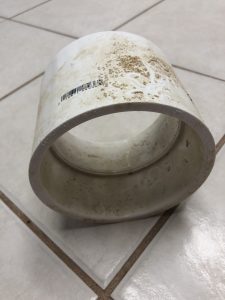
This is how I orient them now.
Keep in mind that this underlying structure is not going to be that big depending on the size of your aquarium. You don’t want any of it to show so keep this in mind when putting it into place. Be sure and leave plenty of space up front where you will use pieces of live rock to hide any sections of coupling or grate.
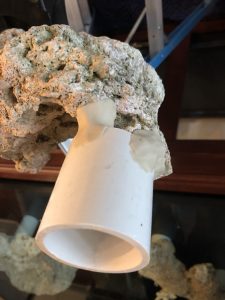
1 inch PVC coupling glued to bottom of dry rock with EPO putty.
I have even used EPO Putty to glue PVC coupling legs onto the bottom of live rock in order to hold the structure up off the bottom. Unlike in the photo, I think the best way to do this is to lay down a layer of putty and bed the coupling into that rather than trying to glue it against uneven, bare rock. In the picture, I show the smaller coupling being oriented vertically but in the future I’ll glue them in horizontally. What I did here really worked out well though because the EPO putty was just essentially holding the coupling in place and wasn’t providing any real structural support.
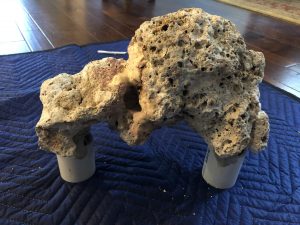
PVC legs to hold rock structure off bottom.
I’m not big on bare bottom tanks but this would be kind of cool do do with a bare bottom system as this would allow you to easily direct a pump’s flow underneath the structure to flush out detritus. If the PVC legs are too distracting to you, just set some loose rock pieces in front of them in order to hide them. Below you see a 120 gallon custom dimension system that I EPO puttied all together. The entire structure is only touching the bottom with the PVC legs. The separate structure on the right has it’s PVC legs hidden by a loose piece of rock.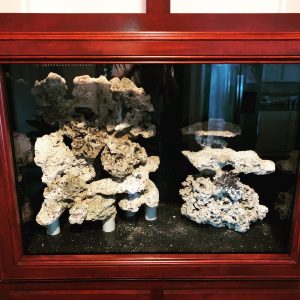
And below is the latest picture of this system,many months later.
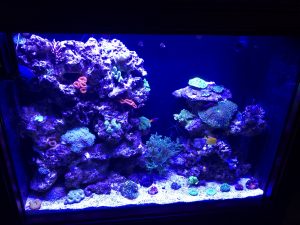
Thanks for reading and I hope this gives you fuel for being creative with your own system’s design.

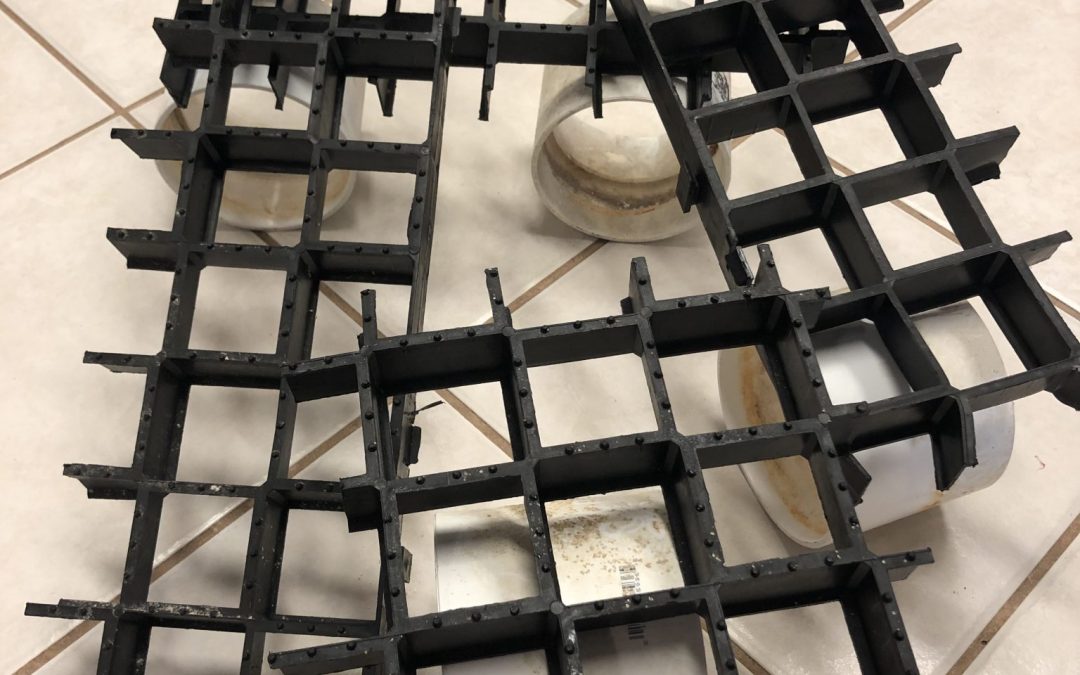
Recent Comments